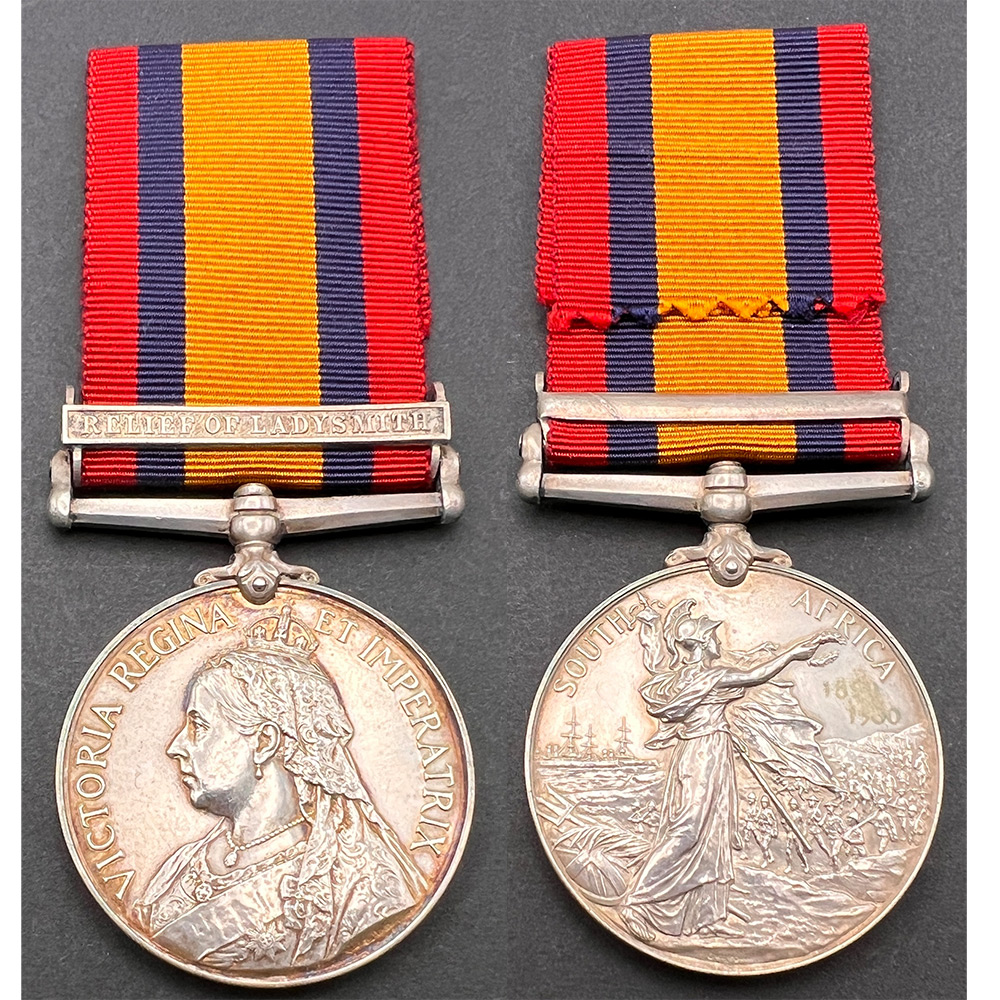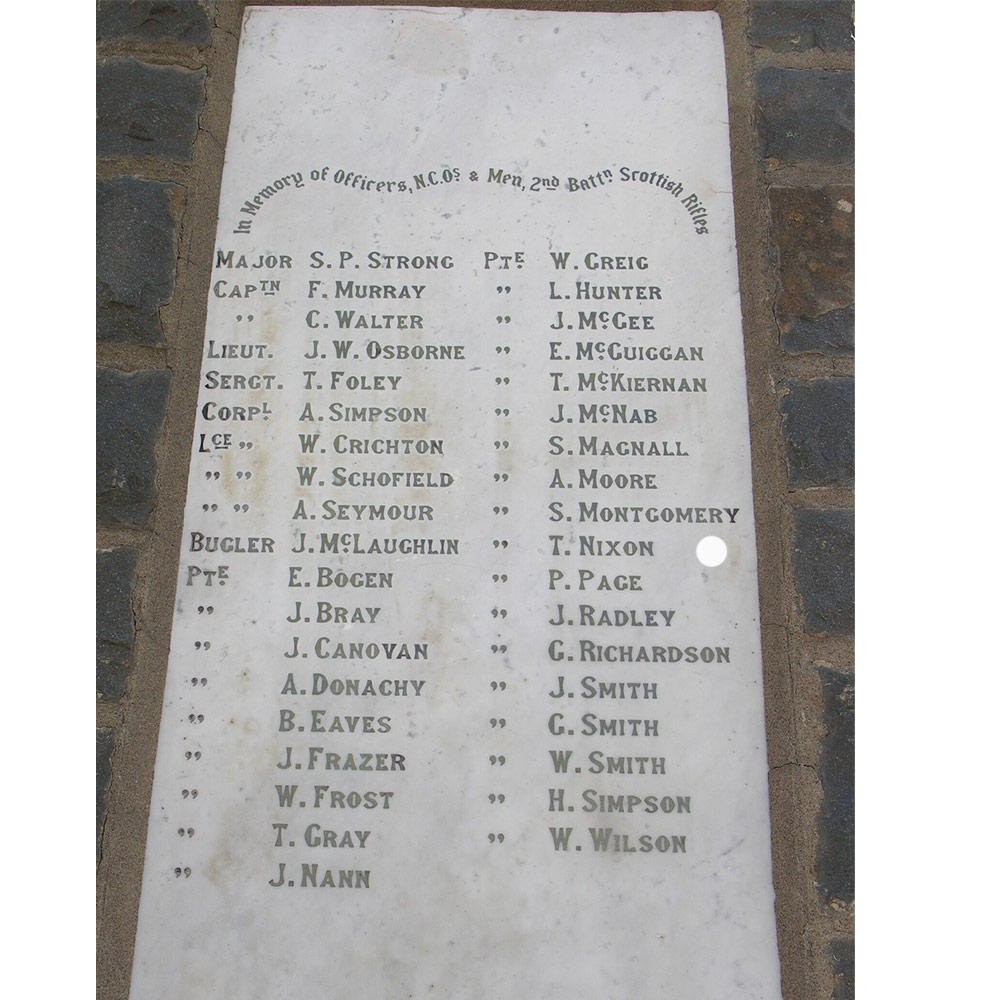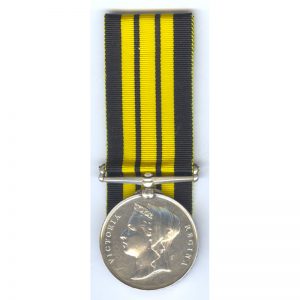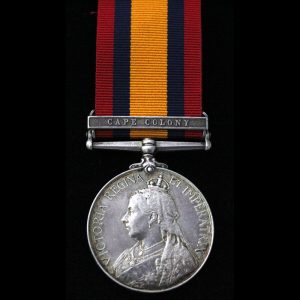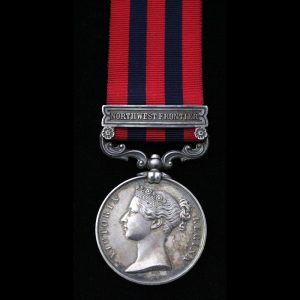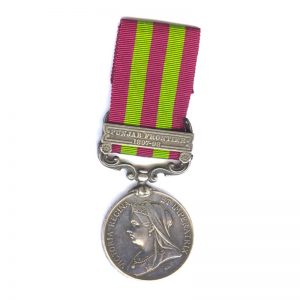Description
Queen’s South Africa Medal, bar Relief of Ladysmith, 3701 Private T. Nixon, 2nd Scottish Rifles, Killed in Action at Spion Kop on 24th January 1900.
Officially impressed: “3701 Pte T. Nixon. Scot: Rifles”
Entitlement confirmed on the medal roll, for the medal and this single clasp, the remarks noting “Killed 24.1.00”
An early posthumous issue of the medal with the large style official impressed naming and visible ghost dates.
Private Nixon, served with the 2nd Battalion of The Cameronians, aka the Scottish Rifles during the Boer War, when he was killed in action at the Battle of Spion Kop during the Relief of Ladysmith operations on 24th January 1900.
Approximately 243 British Soldiers were killed in action at the Battle of Spion Kop, with another 1250 wounded.
His name is on the “Memorial on Spion Kop” which lists the 37 men of the 2nd Bn Scottish Rifles who died from the battle.
Major S.P. Strong was wounded leading his men and soon after died of wounds, along with Captains F. Murray, C. Walter, Lieut J.W. Osborne, along Pte Nixon amongst 34 NCOs and Men all casualties of Spion Kop.
The initial casualty lists sent home, from Redvers Buller note Major Strong died of wounds, alongside Nixon and 15 other NCOs and men who were specifically Killed in Action at the Battle.
A brief account of the Scottish Rifles services in the battle was published in the St James Gazette, 1st February 1900:
“LANCASHIRE LADS AND THE SCOTTISH RIFLES
The Lancashire Brigade were checked by a withering shell-fire as they attacked an important ridge on the hill at two in the afternoon.
Fortunately reinforcements came quickly to their support, firing splendidly.
Later in the afternoon, the Scottish Rifles advanced to their assistance, going in grand style through 2 strongly held trenches, and suffering severe loss.
They would have undoubtedly have taken a third trench if further support had been available.
The seizure of the sugar loaded summit of Spion Kop by the King’s Royal Rifles and this charge of the Scottish Rifles were the two most brilliant features of the day. There was very little bayonet work during the whole 5 days.”
Following the Battle, General Buller sent a despatch on 27th January 1900 that read: “Our men fought with great gallantry, and I would specially mention the conduct of the 2nd Scottish Rifles and 3rd King’s Royal Rifles, who supported the attack on the mountain from the steepest side, and in each case fought their way to the top, and the 2nd Lancashire Fusiliers and 2nd Middlesex, who magnificently maintained the best traditions of the British Army, and Thorneycroft’s Mounted Infantry, who fought throughout the day equally well alongside them.”
Mr Bennet Burleigh, the Scottish Pirate, Confederate Spy and Journalist, who was a War Correspondent at the time wrote that: “Nothing could have been grander than the scaling of Spion Kop by the Scottish Rifles and 60th (KRRC) of glorious reputation.”
Thank you to Nick, Wikipedia User “NJR ZA” for this great picture of the memorial at Spion Kop, which has been uploaded to the Wikipedia page of the Scottish Rifles (Cameronians).
